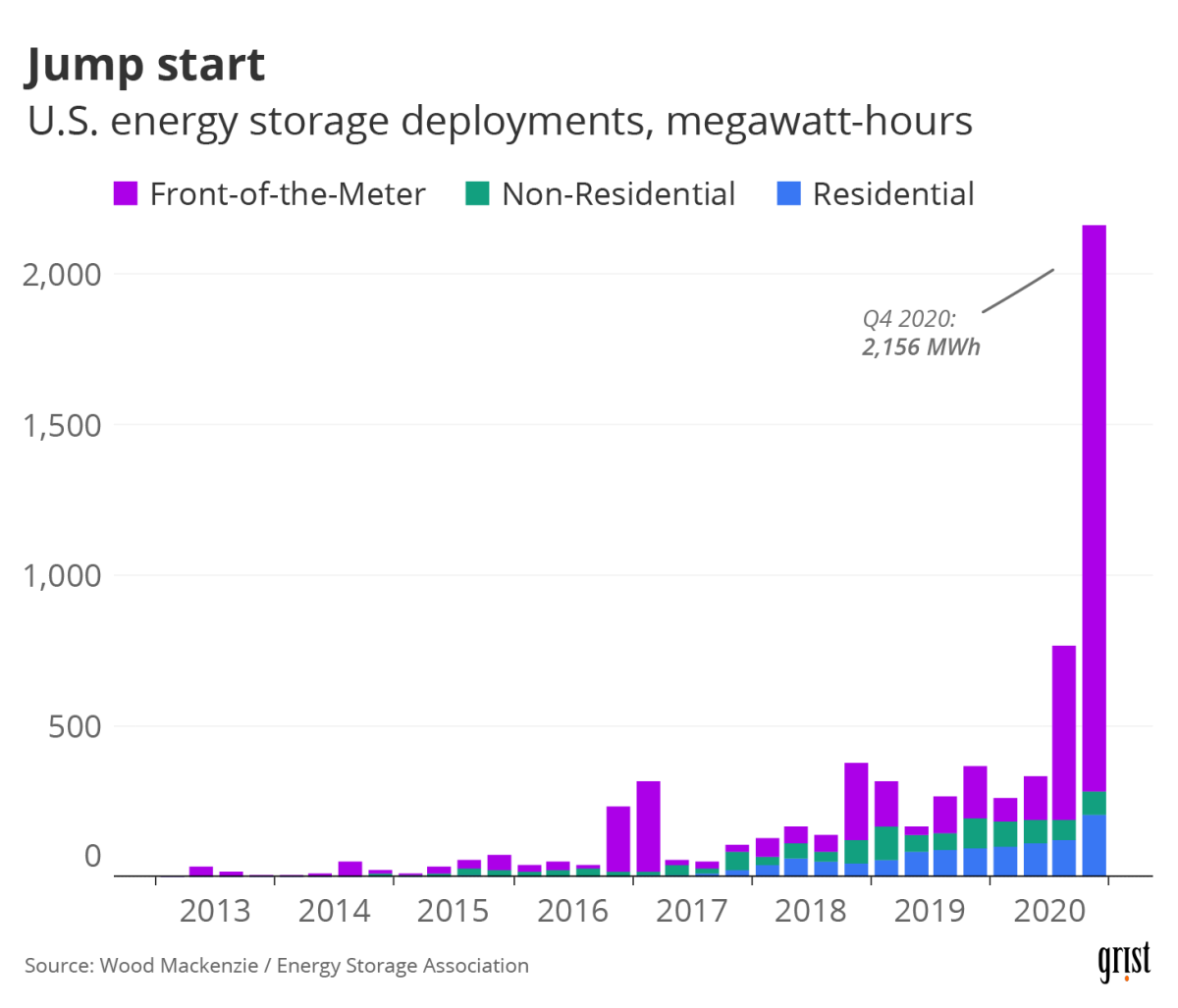During the final months of 2020, while a record number of Americans turned out to vote and the first essential workers were treated to jabs of the COVID-19 vaccine, another historic event was unfolding on the U.S. electricity grid. The amount of battery storage connected to the grid, capable of saving extra wind and solar energy and dispatching it when the wind dies or the sun goes down, shot up dramatically.
More batteries were powered up in the last three months of 2020 than in 2013 through 2019 combined, according to data collected by Wood Mackenzie, an energy research firm, and the U.S. Energy Storage Association, an industry group. That includes all types of energy storage projects, from installations in residential and commercial buildings to big utility-scale arrays. Chloe Holden, an analyst at Wood Mackenzie who worked on the report, said the data was collected from battery vendors, utilities, and installers, and through other forms of market research.

Clayton Aldern / Grist
Holden said this is only the beginning of an upward trend. “We had, in 2020, a total of about 3,500 megawatt-hours deployed this year as a whole,” she said. That’s about the amount of electricity that 329 American homes consume in a year. “In 2021, we expect to see that climb by almost four times.” After that huge spike, which is predicted based on previously announced projects, Wood Mackenzie estimates more gradual growth through 2025.
Naga Srujana Goteti, a former postdoctoral associate at the MIT Energy Initiative who was not involved in the report, told Grist in an email that the upward trend can be partially explained by plummeting costs: Batteries now cost about 80 percent less than they did in 2010. “The overall market size of energy storage is still small,” she said, “and any installation of large storage plants will drive up the total energy contributed by storage.”
That’s basically what happened. The explanation behind the end-of-2020 jump can be summed up in pretty much one word — California. The state added several record-setting battery projects to its collection throughout last year, but in December, it shattered previous records by hooking up a 1,200 megawatt-hour project in Monterey County that can discharge energy for up to four hours. All this battery storage will enable California to add more wind and solar to its energy mix and make its grid less carbon intensive.
But the story in California wasn’t just one of huge utility-scale projects. Residential installations also jumped up. Under regular threat of having their electricity cut off due to heat waves and wildfire risks, homeowners in California are growing increasingly interested in installing their own energy storage systems.
“That is translating into a demand for solar-plus-storage systems,” said Holden. “I’ve talked to a lot of residential installers in the last few months, and they are struggling to meet the demand.”
California offers generous incentives for homeowners to buy battery systems — government rebates can cover between 25 percent and, in some cases, nearly 100 percent of the cost — but Holden said Wood Mackenzie saw an increase in residential storage even in states with no incentives. She said people are beginning to consider storage as an alternative to buying a back-up generator. “We’re looking at potentially having batteries, in the long term, replace generators.”
Maybe next year we’ll attribute the spike to Texas.



